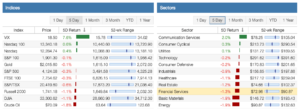T. Rowe Price Group (TROW) Dividend Stock Analysis
T. Rowe Price Group, Inc. (TROW) is a publicly owned investment manager. The firm provides its services to individuals, institutional investors, retirement plans, financial intermediaries, and institutions. It launches and manages equity and fixed income mutual funds.
T. Rowe Price is a dividend aristocrat with a 35 year streak of consecutive annual dividend increases. The last increase occurred in February 2021, when the Board of Directors hiked distributions by 20% to $1.08/share.
In the past decade, the company has managed to increase dividends at an annual rate of 13.30%/year. Dividends went up faster than earnings per share over the past decade, thanks to a growing payout ratio. I would expect future dividends growth in the range of 7% – 8%/year over the next decade.
T.Rowe Price has managed to increase earnings per share at an annual rate of 12.90%/annum since 2007. Earnings rose from $2.40/share in 2007 to $13.12/share in 2021. The company is expected to earn $12.20/share in 2022.
The main drivers behind future earnings growth will come from organic growth in assets under management, long-term growth in equity markets, and new product introductions. As assets under management increase from inflows and rising prices over time, the company achieves greater scale, which reduces per unit cost and increases overall profits.
Two-thirds of assets under management are in retirement accounts, which tend to be stickier. T Rowe price has lower cost active managed funds, which have good performance ratings. Incidentally, the company has been able to grow organically by getting inflows from investors. Its focus on target retirement funds could benefit investors who are saving for retirement or approaching retirement.
Inertia is a powerful force in the mutual fund business – once most ordinary investors make an investment, they are more likely to stick to it and maintain the status quo. This is great news for companies like T. Rowe Price, since it can collect fees for decades down the road on those investments.
Another powerful tailwind is the growth in equity markets over the long haul. If we assume no inflows or outflows from clients, rising stock markets over time will increase the amount of assets under management. If you add in fresh inflows, and reductions in overall costs due to the effects of scale, you can see how long-term growth could easily reach 7% – 10%/year.
The risk to that of course is that when share prices decline during the next bear market, earnings per share will be negatively affected. For example, between 2007 and 2009, earnings per share declined from $2.40 to $1.65, before rebounding in 2010.
Another opportunity for growth includes expanding internationally, which can deliver diversification to the revenue stream and reach markets with untapped potential.
The company has managed to reduce the amount of shares outstanding from 279 million in 2007 to 229 million in 2021. The downside to T. Rowe Price is that the company tends to distribute a of stock options to executives. This dilutes existing shareholders and reduces the impact of share buybacks.
The dividend payout ratio increased from 31% in 2007 to 33% in 2021. I like that there is an adequate margin of safety in the dividend coverage.
Currently the stock is attractively valued at 12.77 times forward earnings and yields 2.77%.
Relevant Articles:
– Dividend Aristocrats List for 2022
– Dividend Champions List for 2022
Published at Wed, 02 Feb 2022 12:42:41 -0800








